On the Rhetoric of a Parable in Midrash Tehilim 90
A less known form of performance of parables is their appeal to the spatial and material context of the listeners of the homily or teaching. This visual rhetoric is apparent for one particular mashal in Midrash Tehillim 90. It occurs in the midrash on the opening verse ‘A Prayer of Moses, man of God‘, in a rabbinic discourse discussing the power of the prayer of Moses. This prayer, tefilla, of Moses is contrasted immediately, quoting Proverbs 15:8, with the sacrifice of Bileam (Numbers 22) and in doing so sets an apologetic tone. This opening is followed up by a teaching of R. Chelbo:
Thirteen Sifrei Tora Moses wrote on the day he died, twelve for the tribes and one to be deposited in the aron, so that if someone would have wanted to forge, he would not be able to do so.
This remarkable tradition, suggestive of inner tensions within Israel, can be found in the very late source Devarim Rabba 49:6 but is not attested in earlier sources. Again, an impingent threat is evoked, and has to be neutralized. Whereas the word aron reminds of the Biblical portable chest containing the tables, the image diverts the hearer’s attention to the Aron haKodesh containing the Torah scrolls and present in his own synagogue. The midrash now elaborates how Moses blessed the tribes (Deut. 33), and raises the issue of why the tribe of Simeon was not included here. The answer is Shimon’s role in the idolatry of Zimri in Numbers 25, which, according to Numbers 26:16, was on account of Bileam as well, and this underlying connection both utters criticism towards Shimon but also strengthens the focus on Bileam, the enemy of Israel, in commenting on Moses’ prayer. Here, the midrash tackles this crisis by stating that Moses’ blessing of Yehuda did include the blessing of Simeon as well, a teaching which is justified in reading the verb shema in ‘hear o God’, ‘shema Adonai’ (Deut 33:7), opening the blessing on Yehuda, as alluding to the tribe of Shimon. Moreover, Shimon was included in the inheritance of Yehuda, as mentioned in Joshua 19:9, and shared its territory. While the fate of Shimon is a topos, Midrash Tehillim uniquely combines it to the issue of the protection of the Torah scrolls. And it is at this junction that the midrash presents its mashal:
“A parable: it is like an oxen with bad manners. What did they do? They tied a lion to its manger and it (i.e., the lion) watched it (i.e., the oxen) so its force weakened. Thus, Jehuda is compared to a lion, as it is said: ‘A roaring lion is Jehuda’ (Gen 49:9), and Shimon is compared to an oxen, for its zodiac sign is oxen, Reuven is a lamb and Shimon oxen.”
The parable has a remote parallel in Tanhuma (which tells that they attached a picture of a lion!) and in Bereshit Rabbati, but its appearance here is unique. It presumes known Biblical metaphor: Juda is a Lion (Gen. 49:9), which is explicated in the nimshal. Surprising is the comparison of Shimon with oxen. The oxen or bull usually is a symbol for Joseph (Gen 49:22; Deut. 33:13), and this indeed is articulated in the parallels. However, the nimshal, following the printed version and manuscripts (courtesy Arnon Atzmon), tells the reader that the oxen is the mazal of Shimon, his zodiacal sign:
‘… for his zodiac sign (mazlo) is oxen, Shimon is oxen; Reuven is lamb and Shimon oxen’.
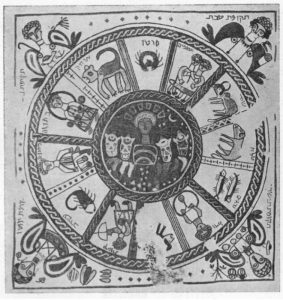
picture: Wischnitzer, Beth Alpha, Zodiac | Wischnitzer 1954:196. Courtesy of the Israel Exploration Society © synagogues.kinneret.ac.il
This explanation, not attested by all manuscripts, adds a protracted identification and adds that Reuven is a lamb. The rather superfluous nature of this explanation makes sense if we understand it as a textualized gesture, since it points out how the tribes are connected to the zodiac signs of the months of the year, where Reuven is represented by a lamb and Shimon by oxen. The gesture is actually a form of spatial and visual rhetoric, assuming a reader well aware of visible artifacts in the synagogue. The gesture directs the hearer to what he can see in two sections of the zodiac representing the months of Nissan, which is identified with Reuven, and the month of Iyar, which is identified with Shimon. Late Roman and Byzantine synagogues dating between the fourth Century CE to the sixth Century CE (f.e. Beth Alpha, see picture) feature such zodiacs, depicted in floor mosaics in the central naves.
The oxen (upper left corner) is depicted for the month of Iyar, whereas the month is Nisan is depicted as a lamb (טלה), just as in our nimshal. But what about the connection of oxen with Shimon? Rabbinic textual traditions link the twelve months to the twelve tribes, but do not provide a full list. An interesting tradition is Massekhet Sofrim (halakha 3), a beautiful story which tells how Jacob wrestles with the possible death of Joseph, and goes to the mountains, erects stones and inscribes these with the names of his sons, adding their individual mazal and the month they represent. He starts with Reuven: ‘Reuven: a lamb, Nisan’, and the text finishes: ‘and so (he did) with every stone’. Again, the reader is presumed to be able to draw the full circle. However, the constellation next to Reuven/lamb is the oxen, which is the textual order in the nimshal as well.
Finally, the visual connection of Yehuda as the protective lion also sheds light on the editorial junction of the two traditions on Shimon with the first tradition deployed in the midrash, which was Moses scribing thirteen Tora Scrolls and hiding them in the Aron to prevent corruption of the text. The motif of a guarding lion may allude very well to lions present in synagogue interiors.
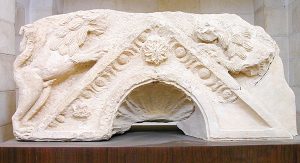
Lions are usually depicted in connection with the Torah Shrine. Famous are the two lions flanking the aedicula of Nabrathein, now visible in the Rockefeller (picture), and the lions found in Um elQanatir, on the Golan, and interpreted as protection of the Torah shrine. Pieces of a lion found in the vicinity of the Torah shrine in the fifth Century CE synagogue in Horvath Kur can probably be added to it as well. The homilist or the editor associates the lion in the mashal not only with the tribe of Juda as protective of Shimon but also as protecting the ark, thus adducing one symbol to link two independent topics: protecting the integrity of the Torah deposited in the Aron and protecting the integrity of the tribes.
Material and textual culture sheds light on the way the mashal performed its visual rhetoric to associate Psalm 90 as the prayer of Moses with the needs of the present community. Moses is able to guarantee the integrity of Israel as well as the integrity of the Torah. Perhaps we may see the parable’s rhetoric as comparable to a liturgical poem (piyut) which calls on the zodiacal signs, visible for the community gathered in the synagogue, to mourn the demise of the Temple. The three heroes of our mashal, the lamb, the oxen, and the lion figure here as well:
“Then, because of our sins, the Temple was destroyed
And the Sanctuary was burnt because of our iniquities.
The tribes of Jacob cried in sorrow
And even the constellations shed tears
The Lamb cried first, its soul saddened
Because its little lambs were led to slaughter.
The Bull made its cry heard in the heavens
Because we were all pursued to the very neck. . . .
Heaven shook from the roar of the Lion
Because our roar [of supplication?] did not rise to heaven
Virgins and young men were killed
And therefore the Virgin’s face was darkened. . .” (translation Avigdor Shinan)

Eric Ottenheijm
Bibliography
- Hachlili, Rachel, Ancient Synagogues-Archaeology and Art: New Discoveries and Current Research. Handbuch der Orientalistik 105. Leiden: Brill, 2013.
- Shinan, Avigdor, “Synagogues in the Land of Israel. The Literature of the Ancient Synagogue and Synagogue Archaeology”, in Steven Fine (ed.), The Emergence of the Synagogue in the Ancient World (Oxford University Press: Oxford, 1996).
- Zangenberg, Jürgen et al., “Horvath Kur. Kinneret Regional project 2012-2013”, Ḥadashot Arkheologiyot 128 (2016): 699-710.
N.B.: this blog is an abbreviated version of a paper delivered at Bar Ilan University, June 11th 2019)
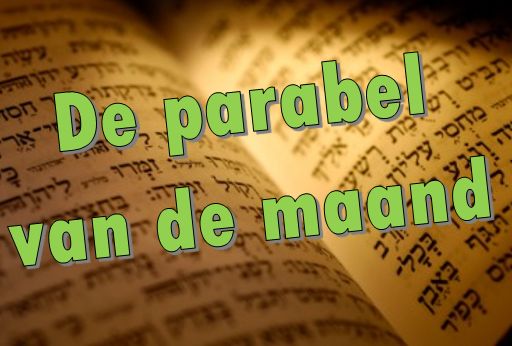
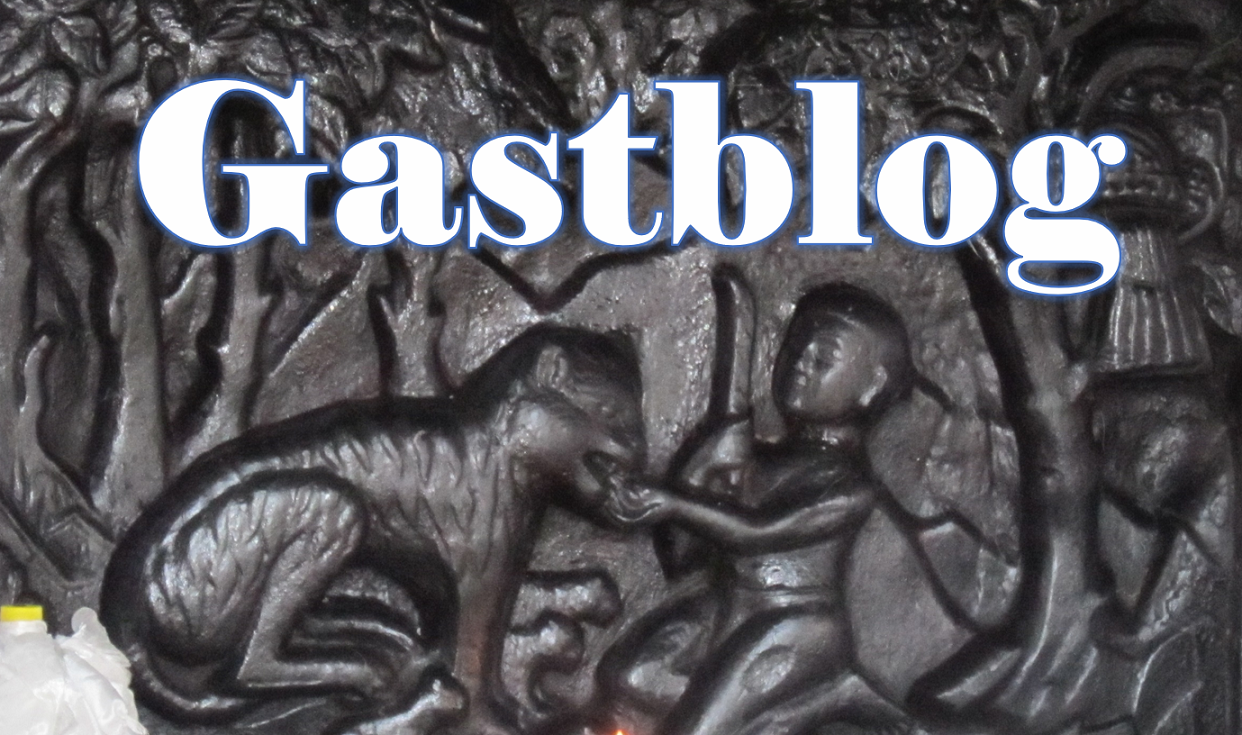
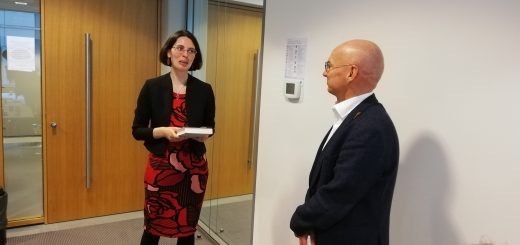
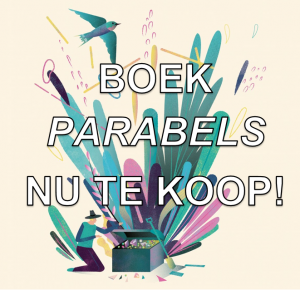
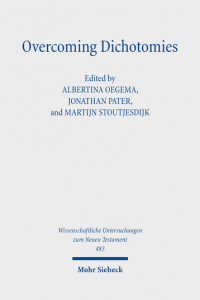
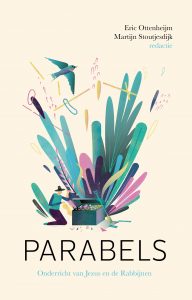
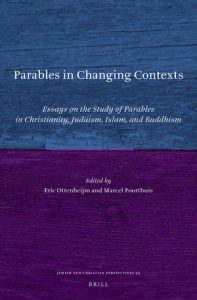
Recente reacties